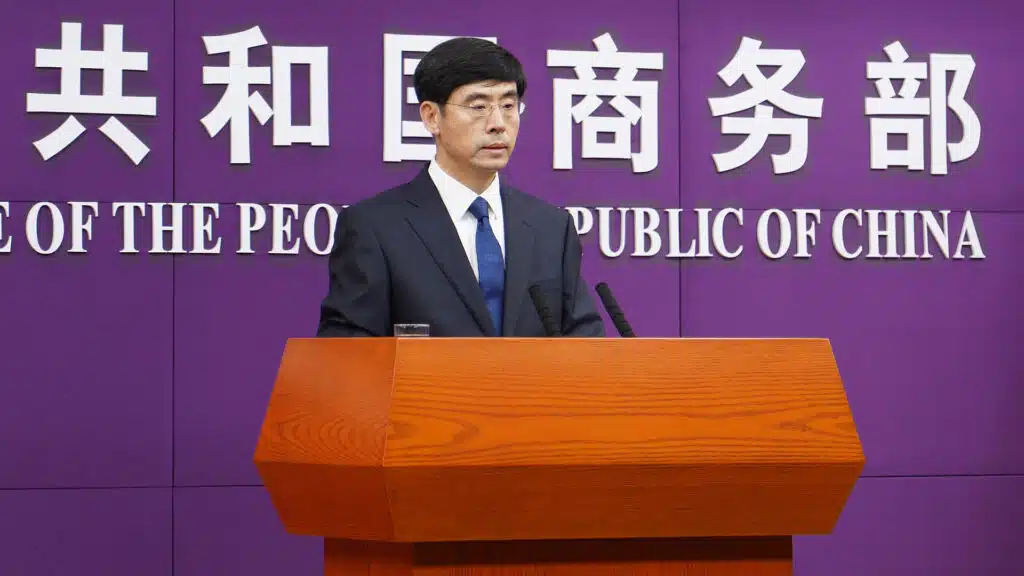As U.S.-China trade tensions reach new heights under President Donald Trump’s second-term tariff blitz, Chinese exporters are scrambling to repurpose products originally bound for American consumers. The latest response?
A wave of livestreams on the Chinese social media platform Rednote, where sellers plead with domestic audiences to purchase unsold goods at deep discounts. With tariffs on Chinese imports hitting 145%, the livestream phenomenon illustrates how grassroots marketing and state-driven consumer nationalism are converging in Beijing’s economic playbook.
Highlights
- Sellers on Rednote appeal to Chinese consumers to buy surplus U.S.-bound inventory at up to 90% discounts.
- Tariff-driven campaign taps into nationalist sentiment with hashtags like “#resist” and “#savefactories.”
- Retail giants JD.com and Freshippo join the effort with large-scale domestic sales initiatives.
- Some analysts view the livestreams as savvy marketing rather than genuine export desperation.
- China repositions domestic consumption as an alternative growth engine amid reduced U.S. access.
A New Front: Livestream Sales as Economic Resistance
Across Rednote, sellers are framing their discounted goods not just as deals, but as acts of patriotic support. In a typical stream, “Dingding Cloud Foreign Trade Warehouse” declared, “The U.S. has breached its contract. No more shipments! Everything is on sale at 90% off!”
Another vendor, “Muzi Has Good Goods,” displayed packed trade containers, lamenting warehouse congestion due to canceled U.S. orders.
The products range from small appliances like rice cookers and juicers to branded items such as Costa Coffee mugs. Most brands, such as OSTMARS and APLX, are lesser known but sell on global platforms like Amazon. The livestreams tap directly into rising domestic nationalism, making shopping an act of economic resistance.

Corporate Support: JD.com and Alibaba Mobilize
The movement has gained momentum with institutional backing. JD.com announced a 200 billion yuan (approximately USD $27.35 billion) fund to support Chinese exporters in redirecting their inventory for domestic sales. Alibaba’s Freshippo supermarket chain has also jumped on board, further bridging the gap between international overproduction and national consumption.
At the recent Canton Fair in Guangzhou, the sentiment was unmistakable. Exporters described the U.S. market as “frozen” and expressed frustration with shifting geopolitical dynamics. Yet others were more skeptical.
One exporter told Reuters, “This is pure marketing. We have other target markets. We just pivot.”
Rednote as a Nationalistic Theater
Digital strategist Ashley Dudarenok framed the livestreams as a natural reaction to external pressure:
“In China, there is this sentiment that we need to come together and resist U.S. bullying.”
Hashtags like #resist, #ChinaCanMakeIt, and #SaveFactories have begun trending in tandem with Rednote broadcasts.
This reactive consumer movement represents a potent cultural shift. What began as trade policy is quickly morphing into a broader ideological campaign. Chinese consumers are now being asked not only to buy, but also to participate in a national effort to support local industry and counter Western pressure.
Real Desperation or Strategic Narrative?
Despite the dramatic imagery and emotive language, some observers believe these sales campaigns may not reflect true distress. Exporters often have diversified markets and may be repurposing this moment as an opportunity to deepen local brand recognition.
Nonetheless, the campaign’s reach is undeniable, and its effectiveness is rooted in its emotional resonance.
As Dudarenok notes, “Trump’s tariffs might actually help China’s domestic economy by driving home a sense of patriotic urgency.”
When Consumption Becomes a Cause
Whether this Rednote movement is grassroots desperation or curated strategy, its implications are clear: China is retooling its domestic market as a frontline defense in the trade war. The campaign is mobilizing consumer sentiment, redirecting supply chains, and reframing retail therapy as national service.







